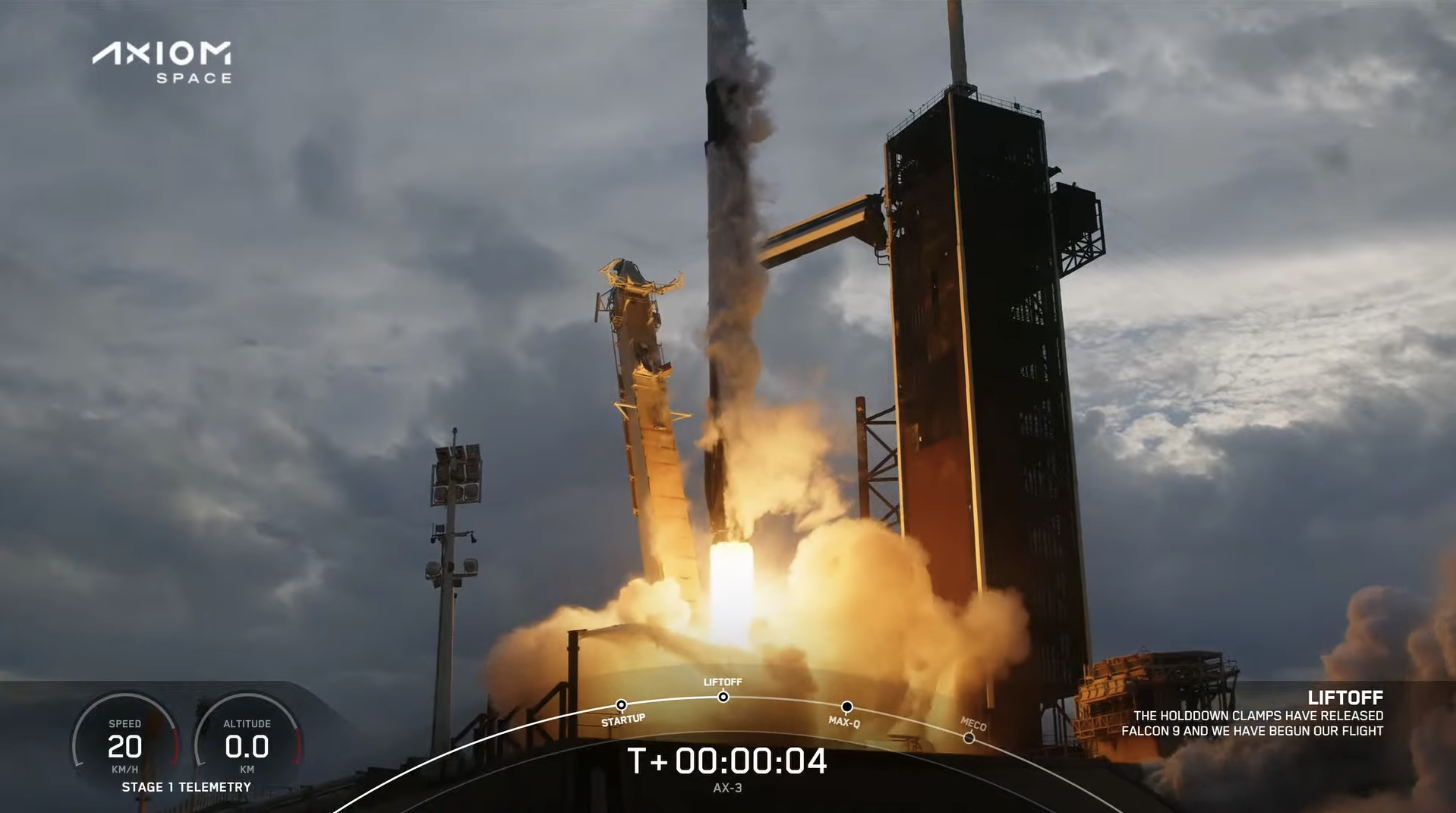
Four astronauts whose ancestral heritage spans six sovereign nations are safely in low-Earth orbit tonight, chasing down a docking at the International Space Station (ISS) early Saturday morning. After a 24-hour delay, the five-times-used B1080 Falcon 9 booster rose into the Florida twilight from the Kennedy Space Center’s (KSC) historic Pad 39A at 4:49 p.m. EST, carrying Dragon Freedom for two weeks of scientific research, technology demonstrations and educational outreach at the sprawling orbital outpost.
Designated “Ax-3”, the flight is the third Private Astronaut Mission (PAM) to the station, contracted between NASA and Houston, Texas-headquartered AxiomSpace, Inc. As previously outlined by AmericaSpace, the mission features approximately 36 experiments—15 from the Italian Space Agency (ASI) and the Italian Air Force, eight from Türkiye Uzay Ajansı (TUA, the national space agency of Türkiye) and 13 from the European Space Agency (ESA) and the Swedish National Space Agency (SNSA)—which will feature 350 hours’ worth of research devoted to human health and wellbeing, radiation exposure, genetic expression and Earth observations.
Leading Ax-3 is former NASA astronaut, veteran ISS commander and America’s premier spacewalker Mike Lopez-Alegria, who currently serves as AxiomSpace Chief Astronaut and commanded the first PAM, Ax-1 back in April of 2022. With five prior flights to his credit, Lopez-Alegria tonight becomes one of only ten humans to have reached a sixth career space launch, as well as the oldest person to command a mission (at age 65) and the first person to fly SpaceX’s Crew Dragon on two occasions.
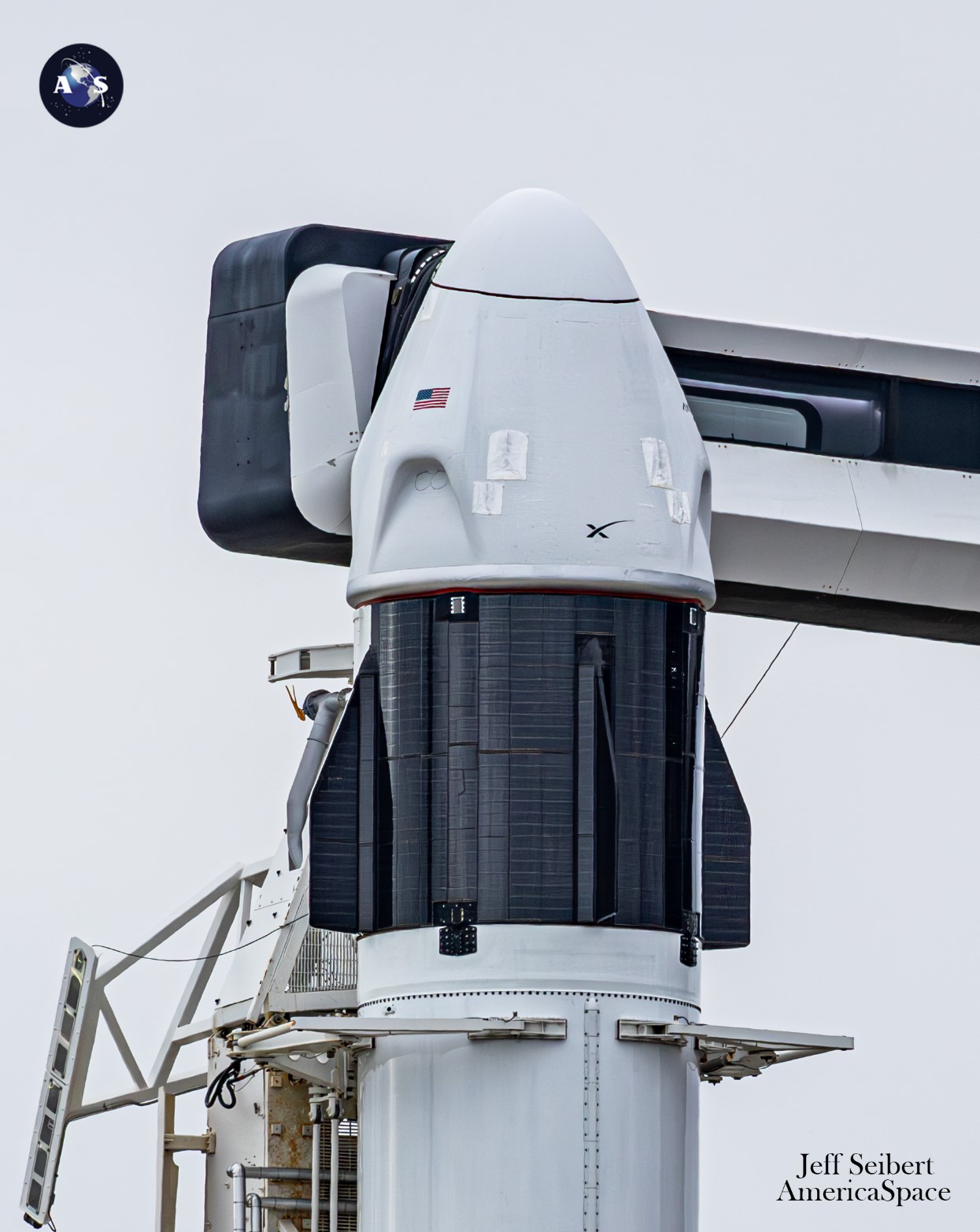
Joining Lopez-Alegria is Italian Air Force colonel Walter Villadei, who was selected as a professional AxiomSpace astronaut in January 2022, and on Ax-3 becomes the second non-American to pilot a U.S. spacecraft. Rounding out the crew are Mission Specialists Alper Gezeravcı, the first national spacefarer of Türkiye, and Sweden’s Marcus Wandt, who has enjoyed the shortest selection-to-flight regime of any spacefarer, having been chosen as an ESA project astronaut just over a year ago in November 2022.
Dragon Freedom, making her third trek to the ISS, arrived at the Pad 39A hangar last Friday for integration with the B1080 booster and the 230-foot-tall (70-meter) stack was raised vertical last weekend. Lopez-Alegria, Villadei, Gezeravcı and Wandt participated in a Dry Dress Rehearsal of their launch-day activities earlier this week and on Tuesday B1080 was put through a Static Fire Test of her nine Merlin 1D+ engines.
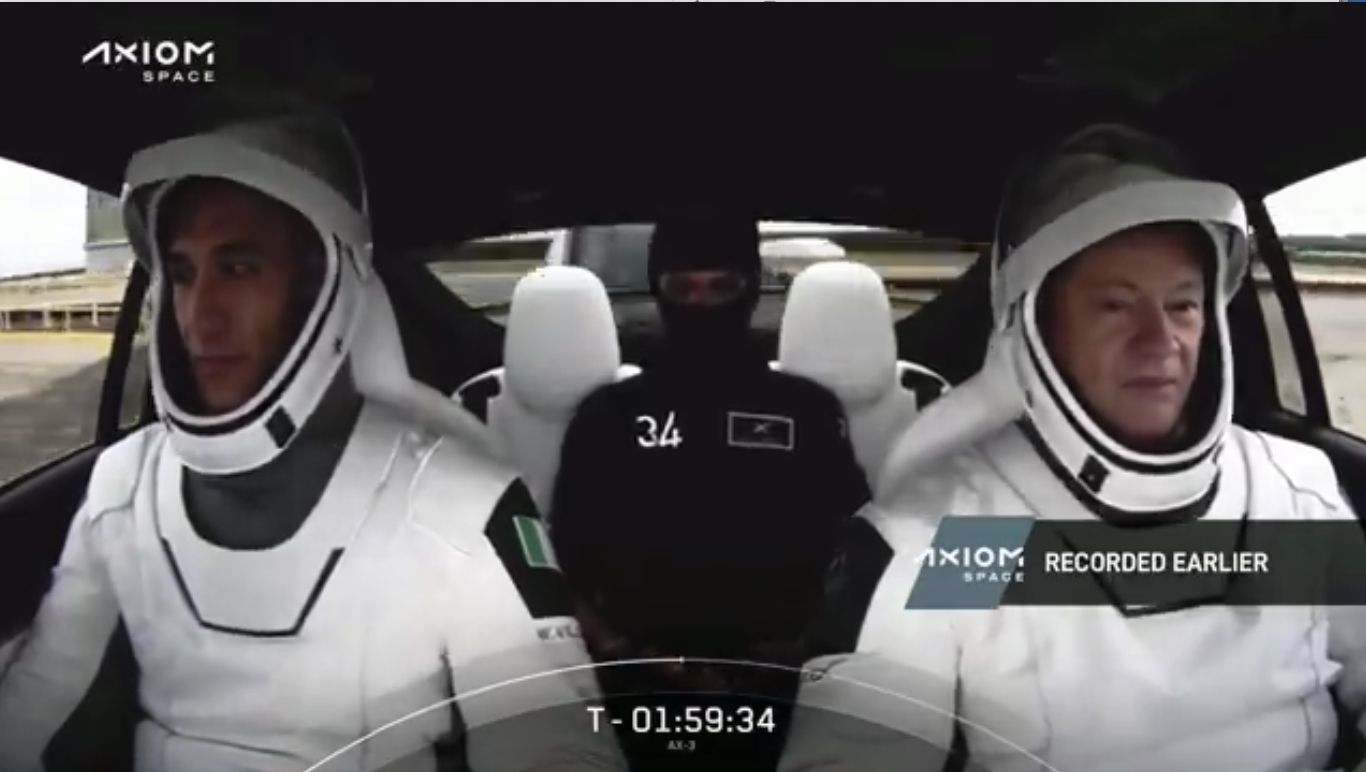
Liftoff was originally scheduled for an “instantaneous” window, opening and closing at 5:11 p.m. EST Wednesday, with highly favorable weather forecasted. But SpaceX elected yesterday to postpone the launch until the backup opportunity at 4:49 p.m. EST Thursday, citing a need “to complete pre-launch checkouts and data analysis on the vehicle”.
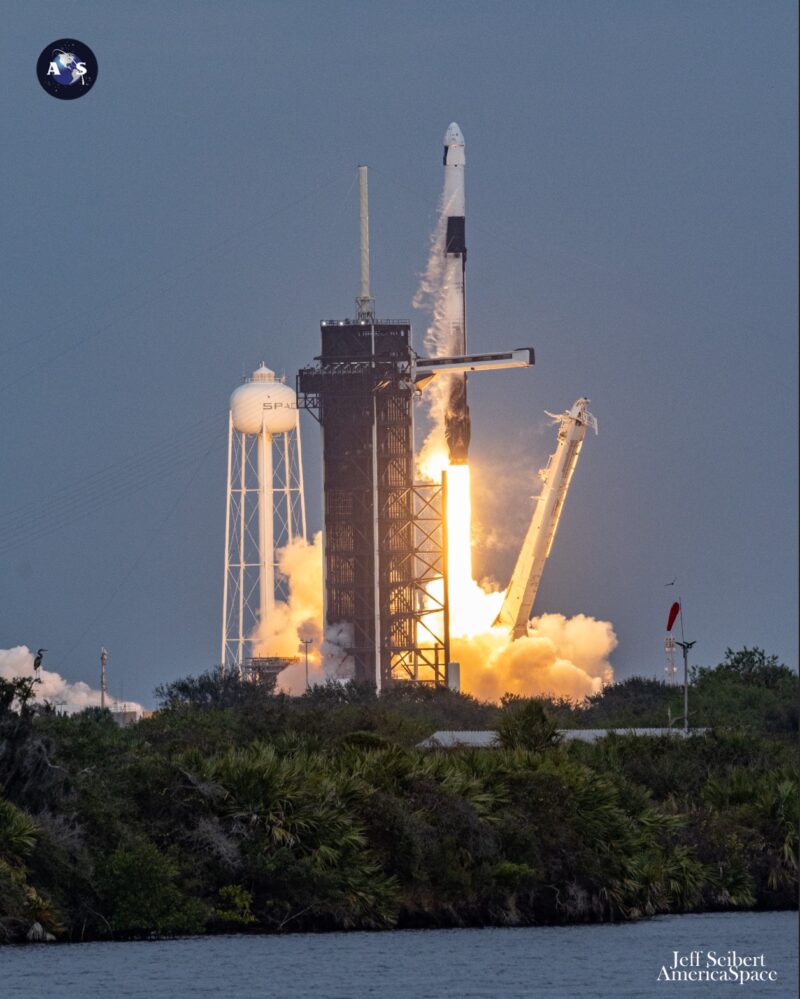
Thursday’s weather outlook was highly favorable, with an 80-percent likelihood of acceptable conditions for the instantaneous T-0. “Post-frontal high pressure center over the Southeastern U.S. will continue its eastward slide into the Atlantic on Thursday, veering local Spaceport winds out of the south-southeast and introducing low-level moisture,” cautioned the 45th Weather Squadron at Patrick Space Force Base in its L-1 update.
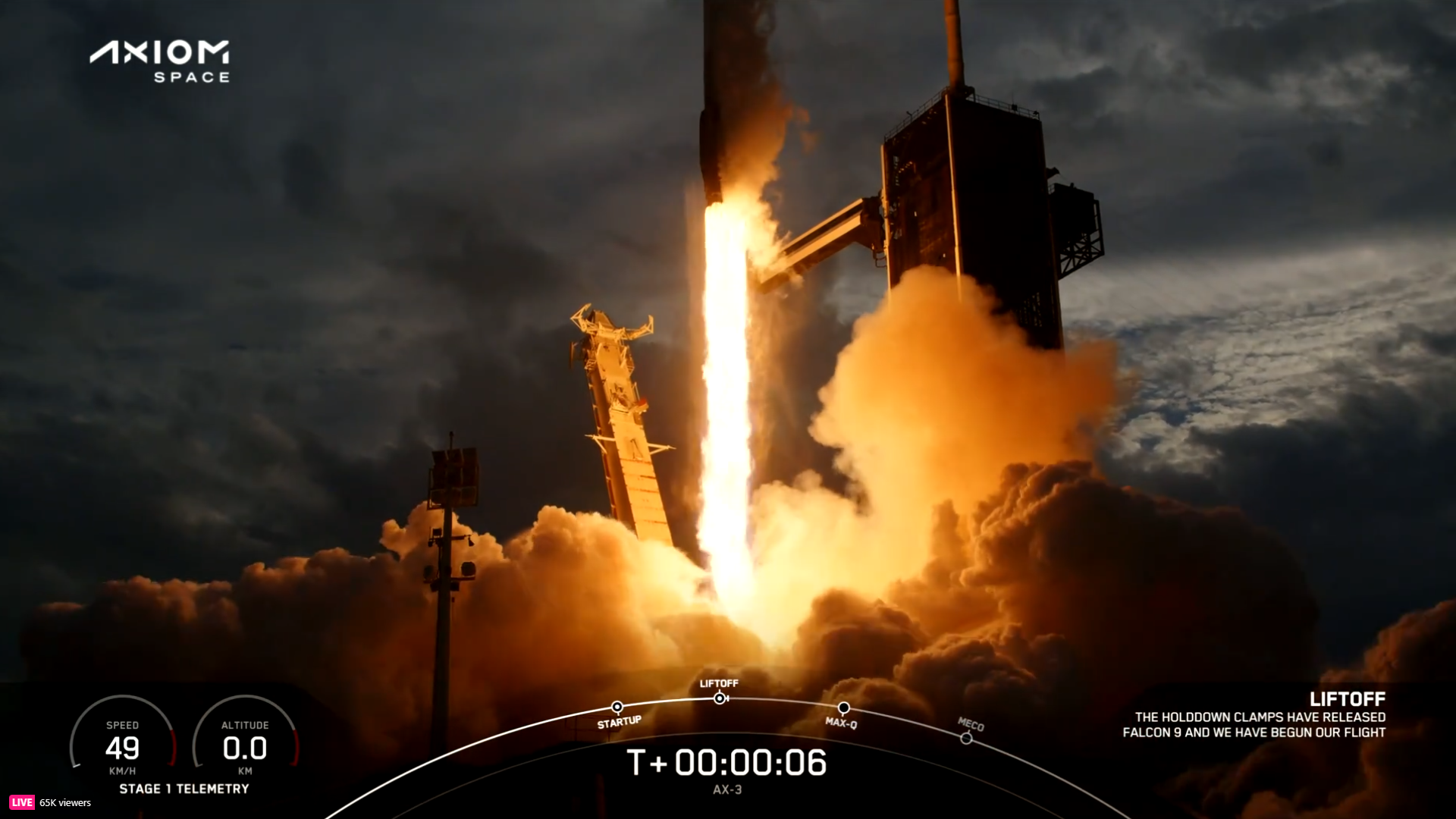
“Models continue to oscillate around how much northward movement the old frontal boundary will have and therefore how much instability the Spaceport will see,” it continued. “They have now swung back towards a more unstable solution, with increasing clouds and chances of showers or even a storm”.
Key risks centered upon possible violations of the Cumulus Cloud Rule and Flight Through Precipitation Rule. As launch time neared, weather forecasters downgraded their probability-of-go estimations to only 60-percent-favorable.
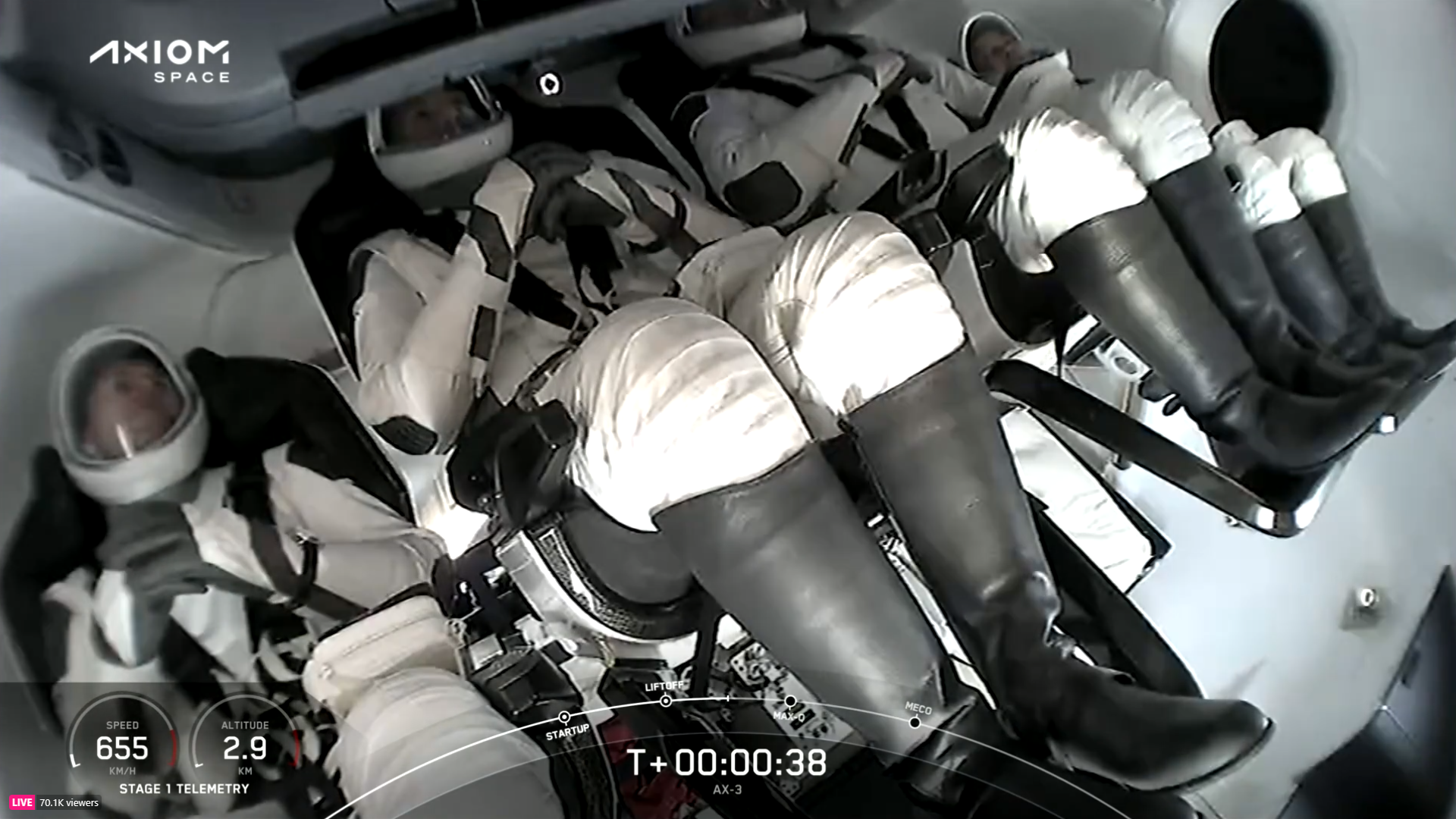
Earlier today, the four astronauts awakened, breakfasted, showered and donned their customized SpaceX launch and entry suits, before taking the well-driven ride from the Neil Armstrong Operations & Checkout Building to the pad in a pair of Tesla Model Y cars. In the lead car were Lopez-Alegria and Villadei, with Gezeravcı and Wandt following in the second, and all eyes could not help but be drawn to one of their aptly-chosen license plates: “L3TS GO”.
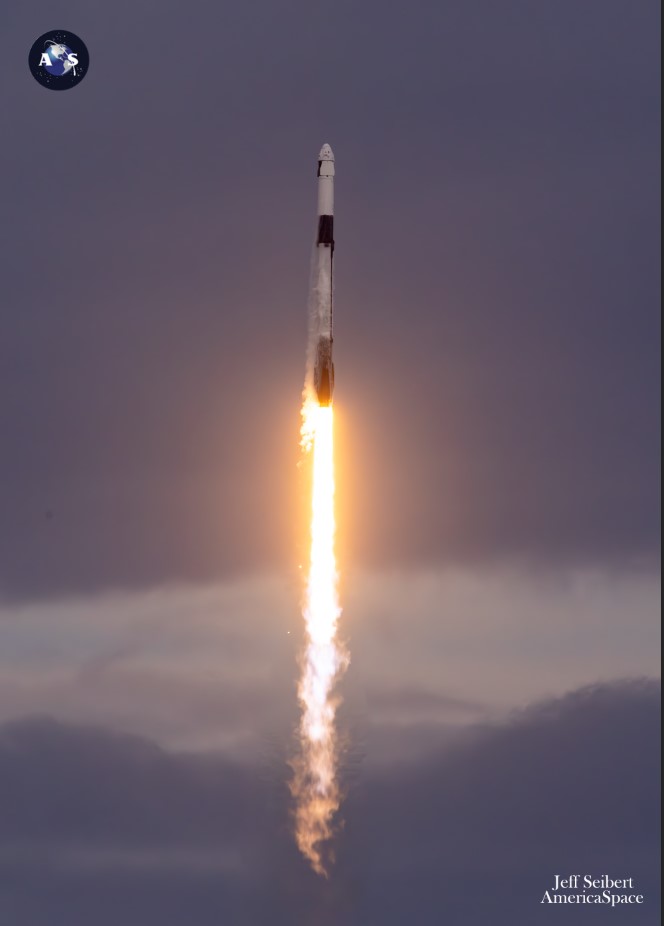
At historic Pad 39A—whose 166 prior launches between November 1967 and last month included the first humans to orbit the Moon, the first crewed lunar landing, the Skylab space station and the first shuttle flight—the four astronauts ascended the elevator and were assisted into their seats aboard Dragon Freedom. “The crew’s seats are rotated, suit leak checks complete and comms check complete,” SpaceX tweeted on X.com.
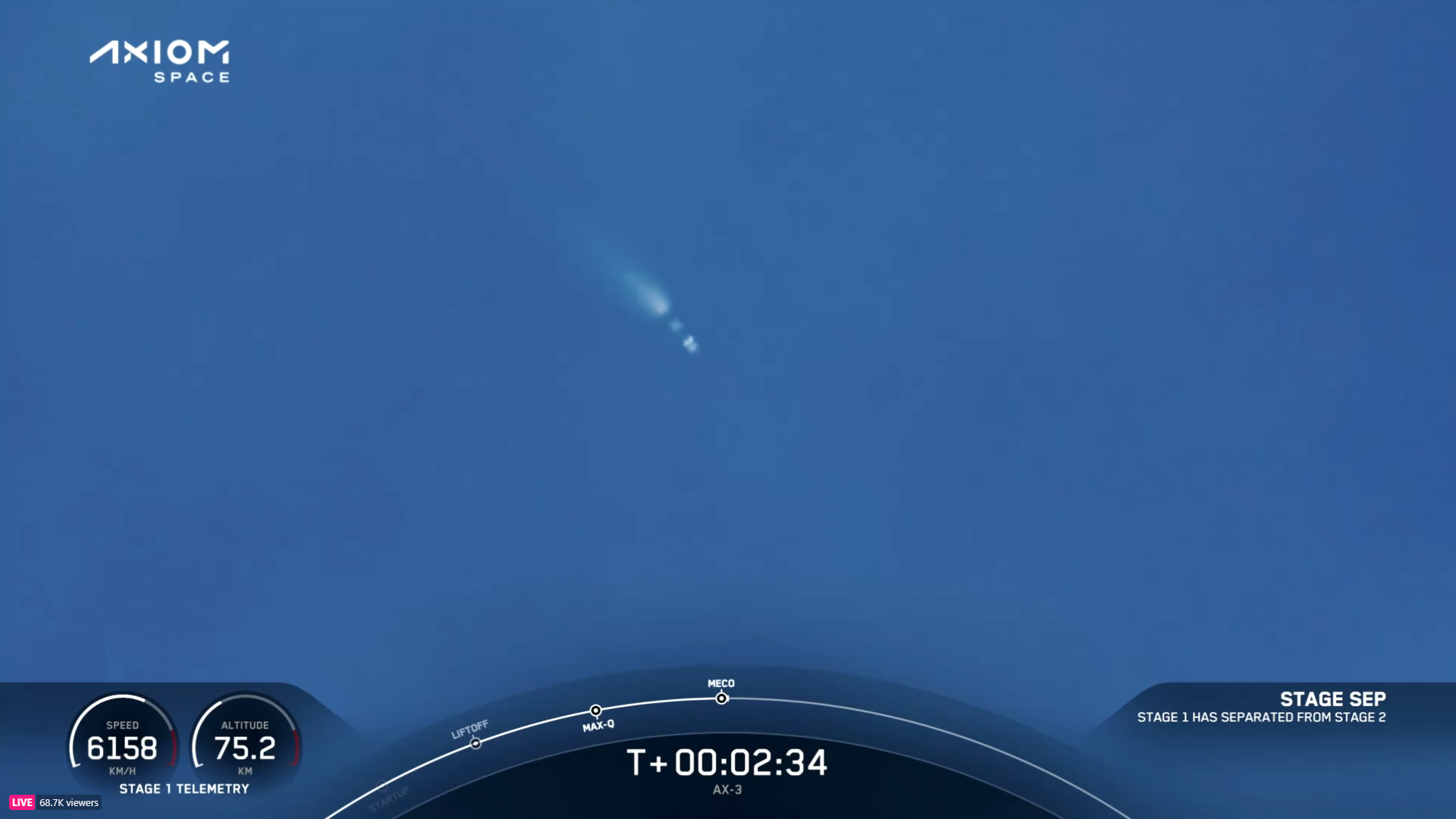
Two hours and 19 minutes before launch, the hatch was closed and technicians began the process of departing the pad area. Despite a brief query from Lopez-Alegria about slightly cool temperatures aboard Dragon Freedom, the countdown proceeded smoothly and after the retraction of the Crew Access Arm (CAA) at T-42 minutes and the arming of the Launch Escape System (LES) at T-39 minutes, fueling the Falcon 9 with liquid oxygen and a highly form of rocket-grade kerosene (known as “RP-1”) commenced at T-35 minutes.
Heading past T-1 minute, the Falcon 9’s computers assumed primary command of the countdown and all vehicle critical parameters and the Launch Director issued a clipped “Dragon, SpaceX, go for launch” at T-45 seconds.
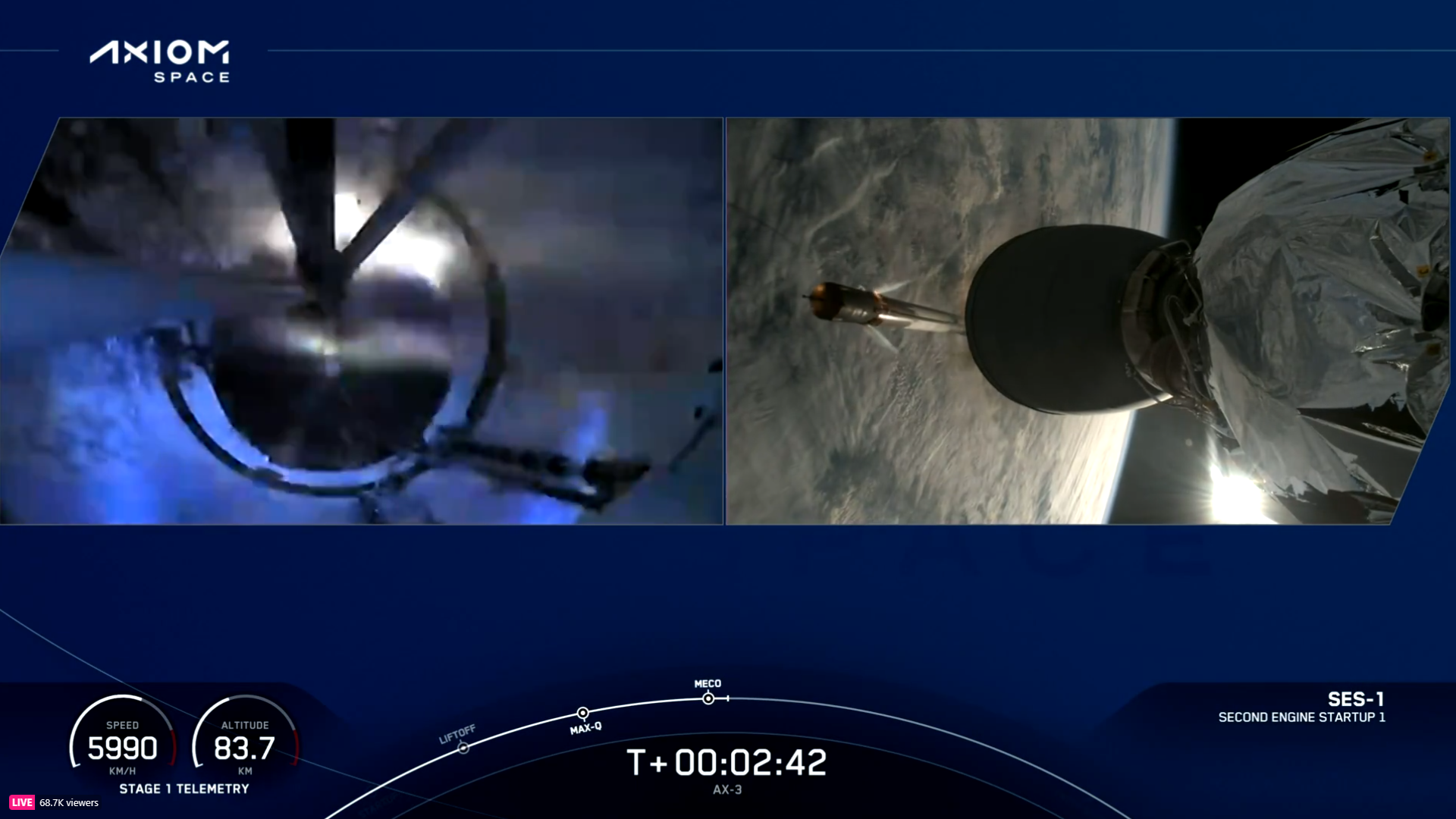
“Go for launch,” acknowledged Lopez-Alegria.
B1080 powered smoothly away from Pad 39A at 4:49 p.m. EST, her nine Merlin 1D+ engines delivering an estimated 1.5 million pounds (680,000 kilograms) of thrust to lift the stack airborne. Passing the point of peak aerodynamic turbulence upon the rocket, known colloquially as “Max Q”, about 58 seconds into ascent, the Merlins continued to burn hot and hard until Main Engine Cutoff (MECO) at 2.5 minutes after liftoff.
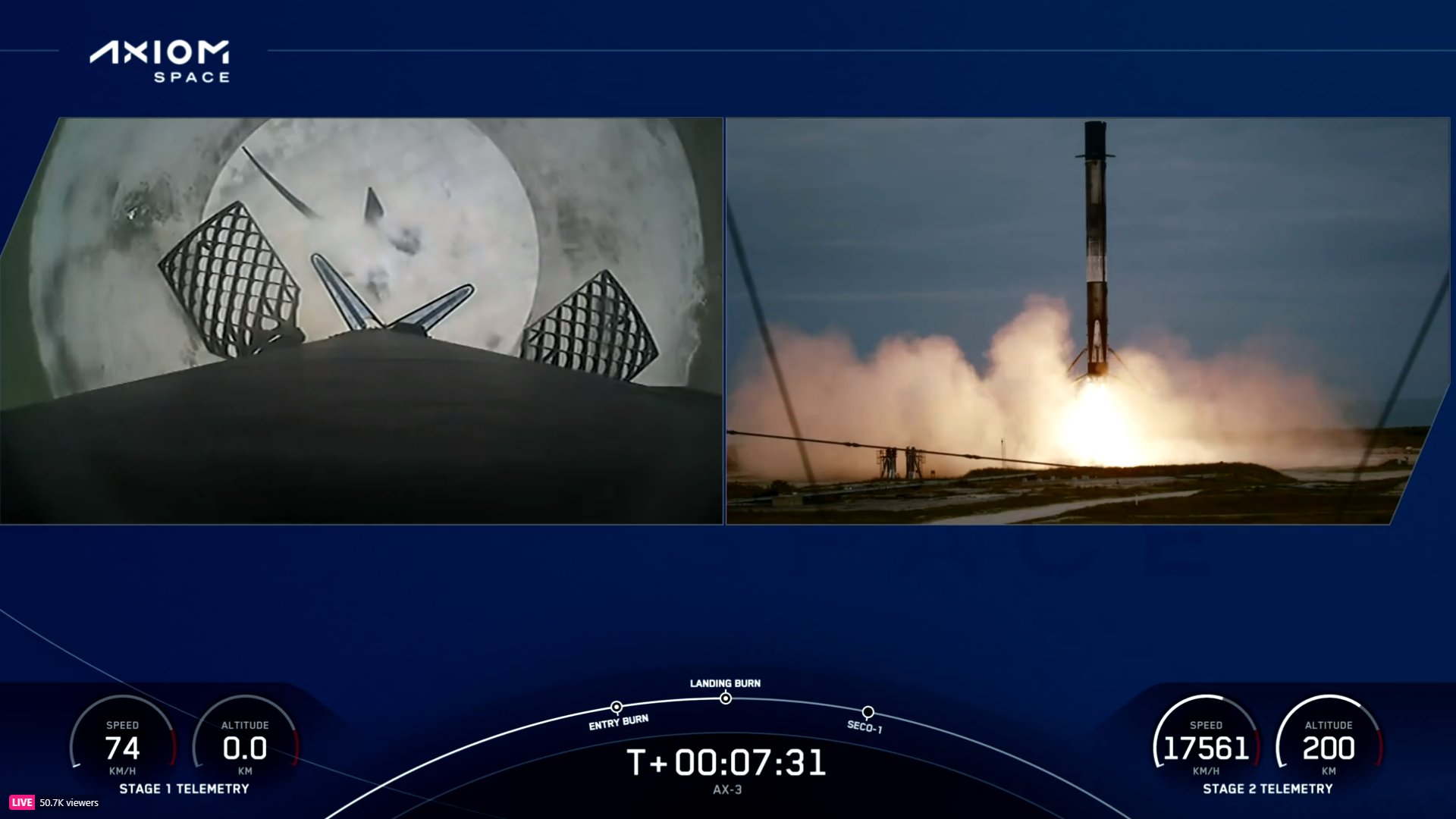
Views of the four spacefarers showed multiple thumbs-ups, clapping of hands and Wandt in particular—visible in his Mission Specialist Two seat—was grinning ear to ear throughout ascent. As the first vestiges of weightlessness manifested themselves, Lopez-Alegria could be seen flexing his legs away whilst Gezeravcı marveled at the curious sight of a tethered pen bouncing in free-fall.
Her job done, B1080 separated from the stack and pirouetted to a smooth touchdown on solid ground at Landing Zone (LZ)-1 at Cape Canaveral, wrapping up her fifth mission in eight months. The single Merlin 1D+ Vacuum engine of the Falcon 9’s second stage ignited for a lengthy six-minute burn to deliver Dragon Freedom and Lopez-Alegria, Villadei, Gezeravcı and Wandt into low-Earth orbit, shutting down at T+8.5 minutes.
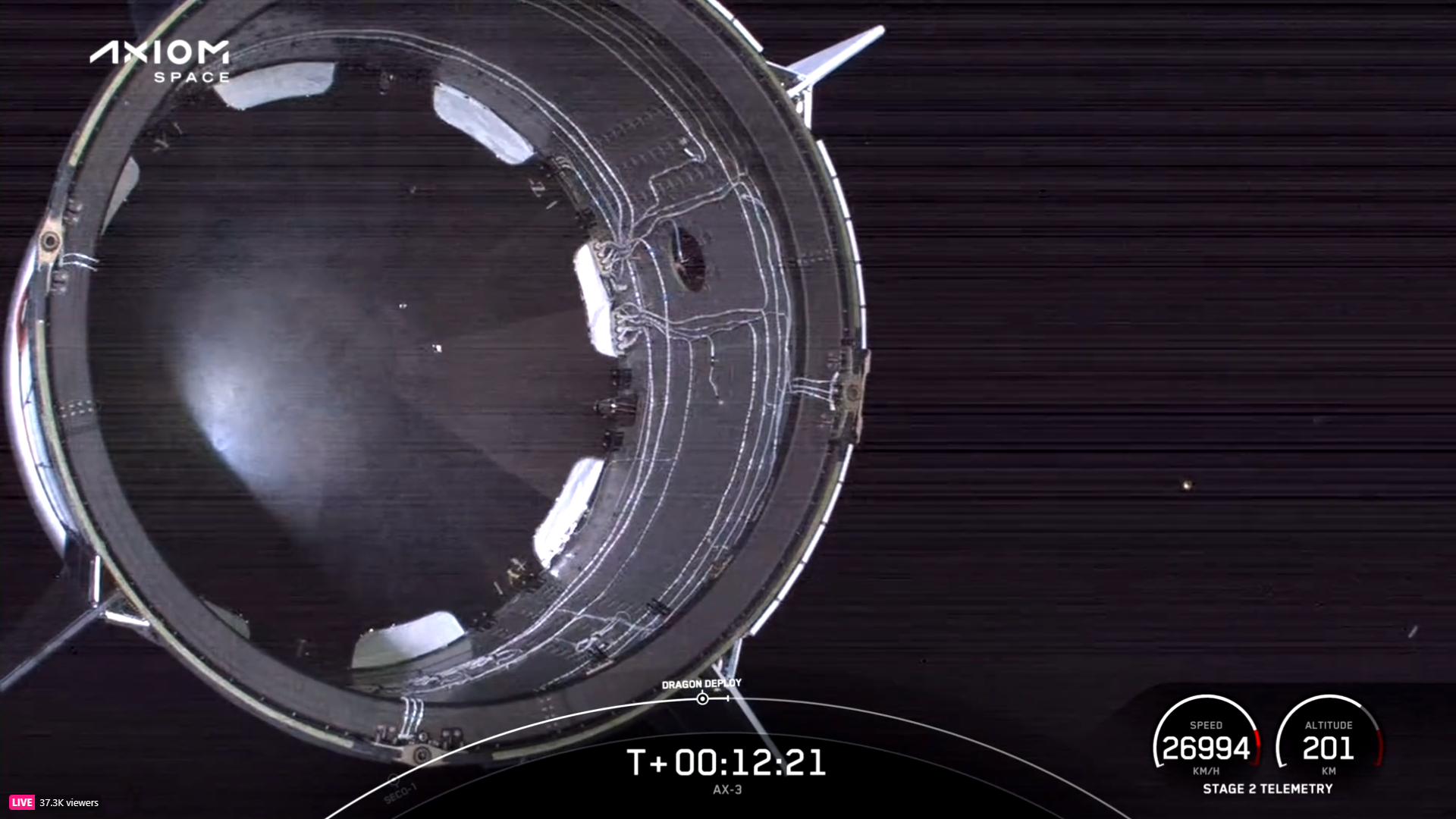
Spacecraft and rocket parted company at 12 minutes into the flight and Dragon Freedom’s nose cone opened 50 seconds later to expose the critical navigation and rendezvous sensors. The four astronauts will spend a little more than 36 hours and 24 Earth orbits in free flight, ahead of an autonomous docking at the forward-facing port of the space station’s Harmony node as early as 4:19 a.m. EST Saturday.
After standard pressurization and leak checks, hatches will be opened around 6 a.m. EST and the new arrivals will be welcomed aboard by the incumbent Expedition 70 Commander Andreas Mogensen of Denmark, his U.S. crewmates Jasmin Moghbeli and Loral O’Hara, Russian cosmonauts Oleg Kononenko, Konstantin Borisov and Nikolai Chub and Japan’s Satoshi Furukawa. For the next two weeks, the station will operate as an integrated crew of 11 people representing seven sovereign nations—the United States, Italy, Türkiye, Sweden, Russia, Japan and Denmark—plus Spain and Norway, when one considers Lopez-Alegria’s and Wandt’s ancestral heritage.




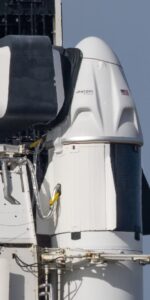
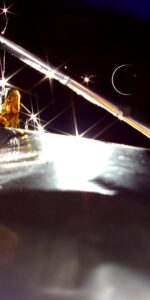
7 Comments
Leave a Reply7 Pings & Trackbacks
Pingback:Northrop Grumman, SpaceX Target Monday for Next ISS Cargo Mission - AmericaSpace
Pingback:SpaceX Flies Back-to-Back Falcon 9 Missions, Looks to Month-Ending Tenth Launch Tomorrow - AmericaSpace
Pingback:Dragon Freedom Splashes Down, Wraps Up Ax-3 Mission to Space Station - AmericaSpace
Pingback:Dragon Freedom Splashes Down, Wraps Up Ax-3 Mission to Space Station - SPACERFIT
Pingback:Crew-7 Prepares for Monday Space Station Departure, Tuesday Splashdown - SPACERFIT
Pingback:CRS-30 Launches to Space Station, Following Soyuz MS-25 Pad Abort - AmericaSpace
Pingback:NASA’s Loral O’Hara to End 204-Day Mission, Return to Earth Tomorrow Night - SPACERFIT